Syria’s New Constitutional Declaration: A Divisive Step Forward or a Setback for Pluralism?
While some have praised the constitutional draft as a step toward stability, others have raised significant concerns over the document’s failure to adequately represent Syria’s rich diversity.
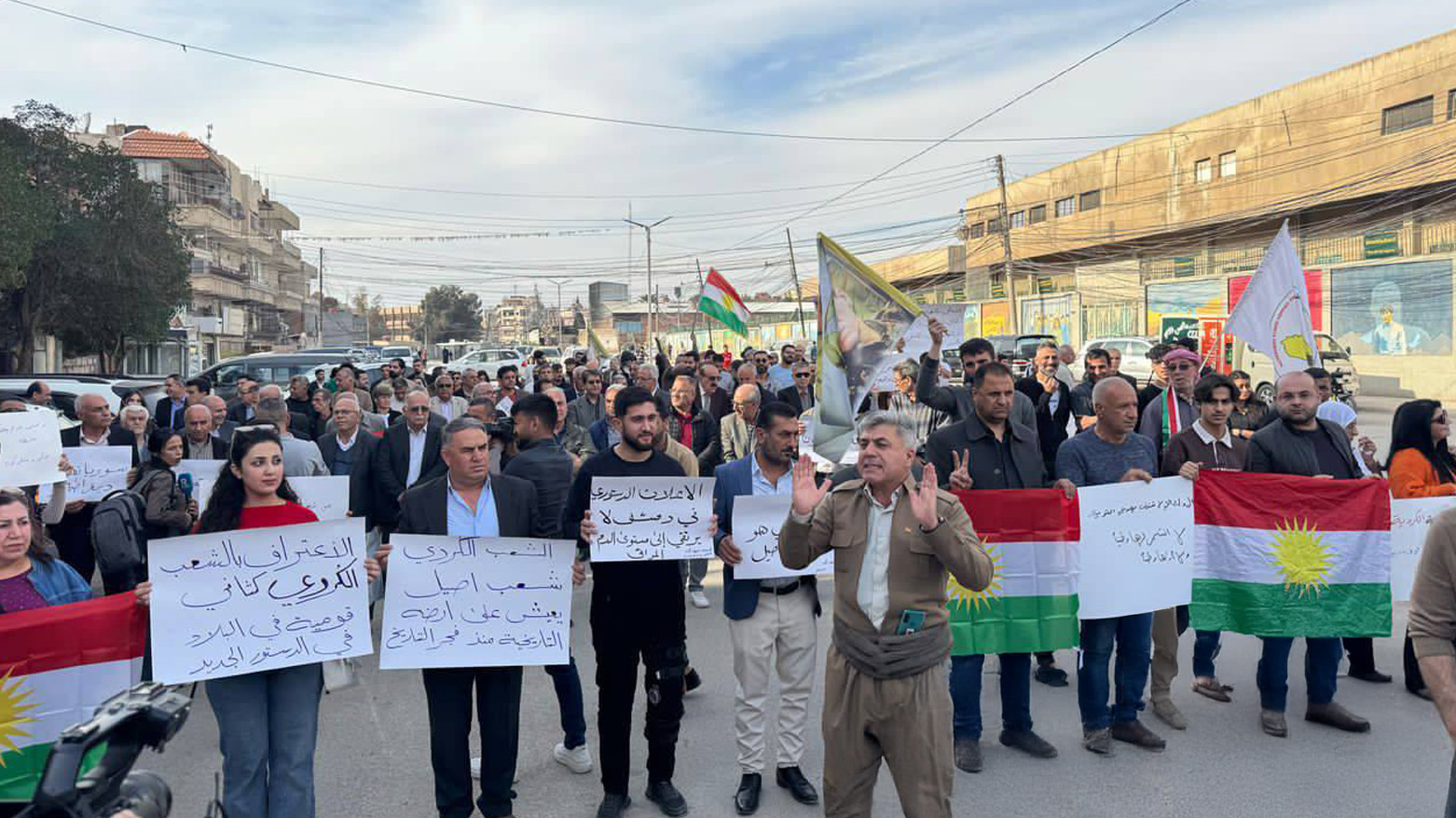
ERBIL (Kurdistan24) - Demonstrators gathered in the city of Amuda northeast Syria (Rojava), on Friday to protest the newly released constitutional declaration issued by the Syrian government, marking a significant act of defiance against the regime's move.
The protesters condemned the provisions of the declaration, arguing that it fails to reflect the aspirations of Syria's diverse population and instead strengthens the grip of the ruling authorities without bringing about any genuine change.
Holding banners that read “Syria is a country of many nationalities, ethnicities, sects, and religions,” and “The Kurdish people in Syria are indigenous to their land passed down by their ancestors,” the protesters voiced their belief that any political solution should be based on the will of the Syrian people, not imposed by the regime.
“We do not accept a constitution that does not represent us,” one protestor remarked. “The Kurdish people are a core part of Syria, and we demand our rights to be acknowledged.”
Syria’s Constitutional Declaration Divides Over Representation
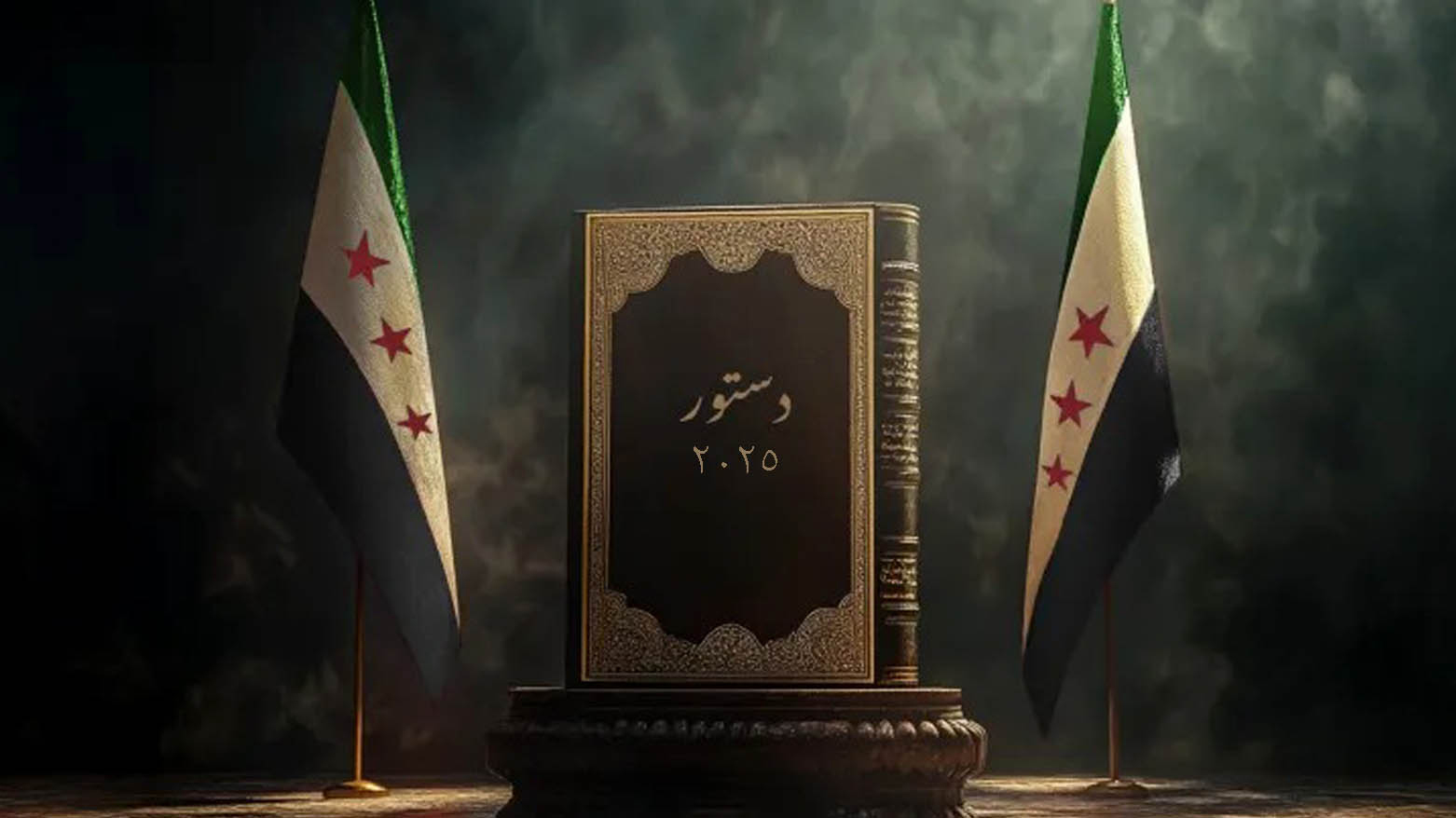 A graphic designed by Kurdistan24 features an old book with the words 'Constitution 2025' written on it, alongside two Syrian flags.
A graphic designed by Kurdistan24 features an old book with the words 'Constitution 2025' written on it, alongside two Syrian flags.The announcement of Syria's new constitutional declaration on Thursday, has sparked heated debate across the country, particularly among its diverse ethnic and religious communities.
While some have lauded it as a step toward stability, others, including political factions and grassroots organizations, are expressing deep concerns over the document’s failure to fully represent Syria’s rich diversity, highlighting the growing rift between the central government and marginalized communities, including Kurds, Druze, and others.
A Divisive Document: Exclusion and Centralization at the Core
The Syrian interim government, led by President Ahmed al-Sharaa, introduced the constitutional declaration after a series of political shifts and intensified clashes within the country. The document outlines a new vision for Syria’s governance, with an emphasis on Islamic law as a primary source of legislation.
It also enshrines the role of the president in the country’s political future. However, its focus on a single national identity and a centralized power structure has drawn sharp criticism, particularly from Syria’s ethnic and religious minorities.
The Kurdish Perspective: A Missed Opportunity for Pluralism
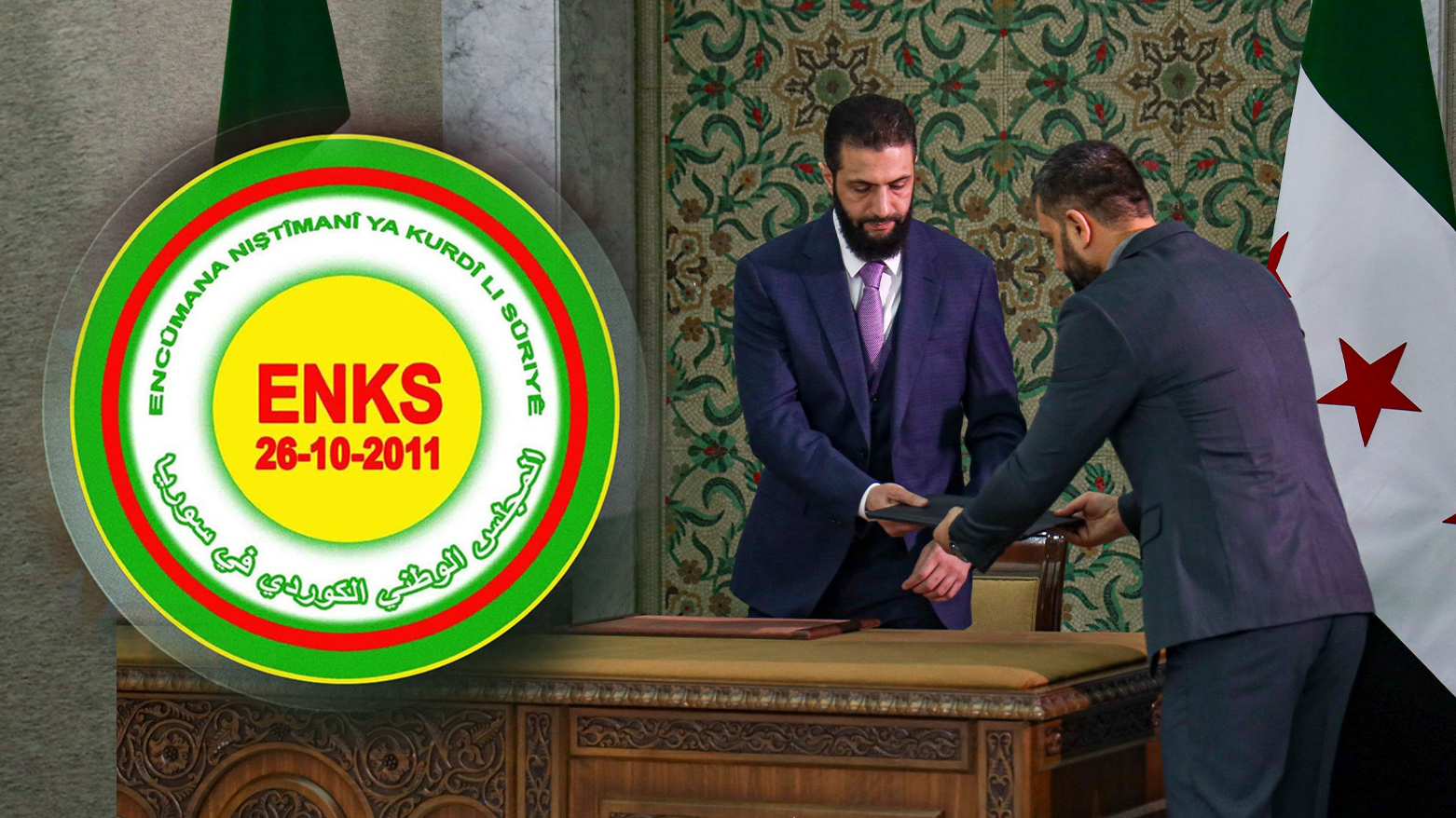
The Kurdish National Council in Syria (KNCS), has been one of the most vocal critics of the new declaration. For the KNCS, “the declaration fails to reflect the aspirations of a multi-ethnic and multi-religious Syria.”
The council argues that the new document disregards the country’s rich cultural diversity by reinforcing a singular national identity that excludes minorities such as Kurds, Assyrians, and Syriacs.
“The declaration ignored Syria’s pluralistic nature and its identity as a multi-ethnic and multi-religious state,” said the KNCS in an official statement.
“It failed to guarantee national and religious rights for its diverse components, instead enshrining a single national identity in the state’s official designation—a clear act of exclusion.”
DAANES are Seeking Guarantees for Diversity and Self-Rule
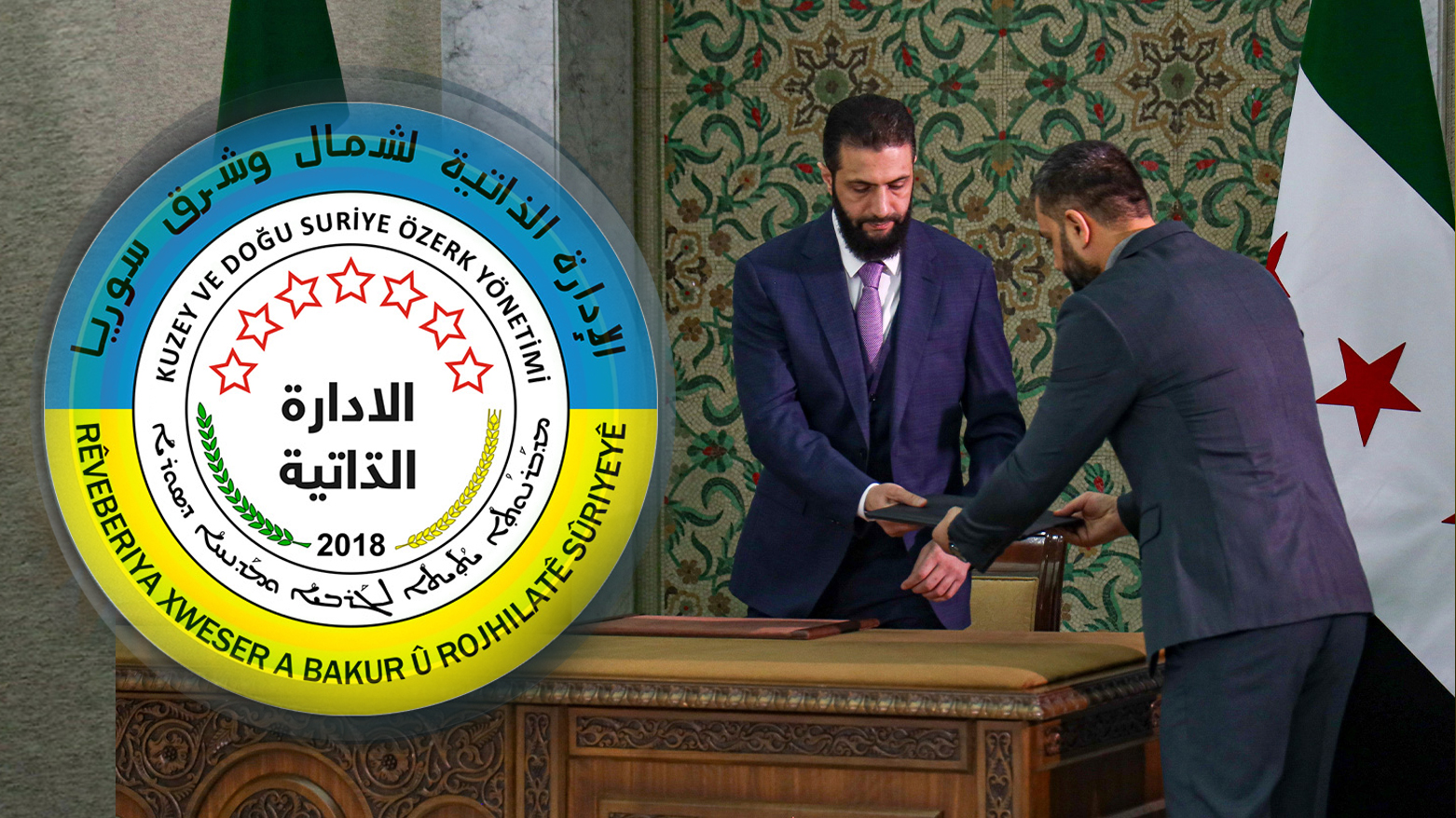
In a statement, the Democratic Autonomous Administration of North and East Syria (DAANES), which governs regions in Rojava, expressed concerns about the new declaration. DAANES stated that “the document fails to adequately protect the rights of Syria’s diverse population, particularly its Kurdish, Arab, and Assyrian communities.”
DAANES argues that the declaration lacks explicit recognition of the cultural, linguistic, and political rights of Syria’s minorities, undermining the progress made in regions like Rojava, which have operated under a decentralized governance model.
DAANES has also voiced concerns about the future of Kurdish autonomy, fearing that the document could pave the way for the gradual erosion of self-rule in the Kurdish-majority regions. Furthermore, DAANES believes that without comprehensive guarantees for the protection of minority rights, Syria’s prospects for achieving lasting peace and reconciliation remain bleak.
The Druze Perspective: Navigating the Tensions Between State and Society
The Druze community, particularly those in Syria’s southern regions, also find themselves grappling with the implications of the new constitutional declaration. The Druze, who have long maintained a delicate balance between loyalty to the Syrian state and their religious autonomy, view the declaration with a mix of caution and skepticism.
On Friday, a delegation of Syrian Druze leaders visited the Israeli-occupied Golan Heights, a move that garnered significant attention. This visit, which included prominent Druze clerics, came in the wake of heightened tensions regarding the perceived threat to the community’s status under the new government in Damascus.
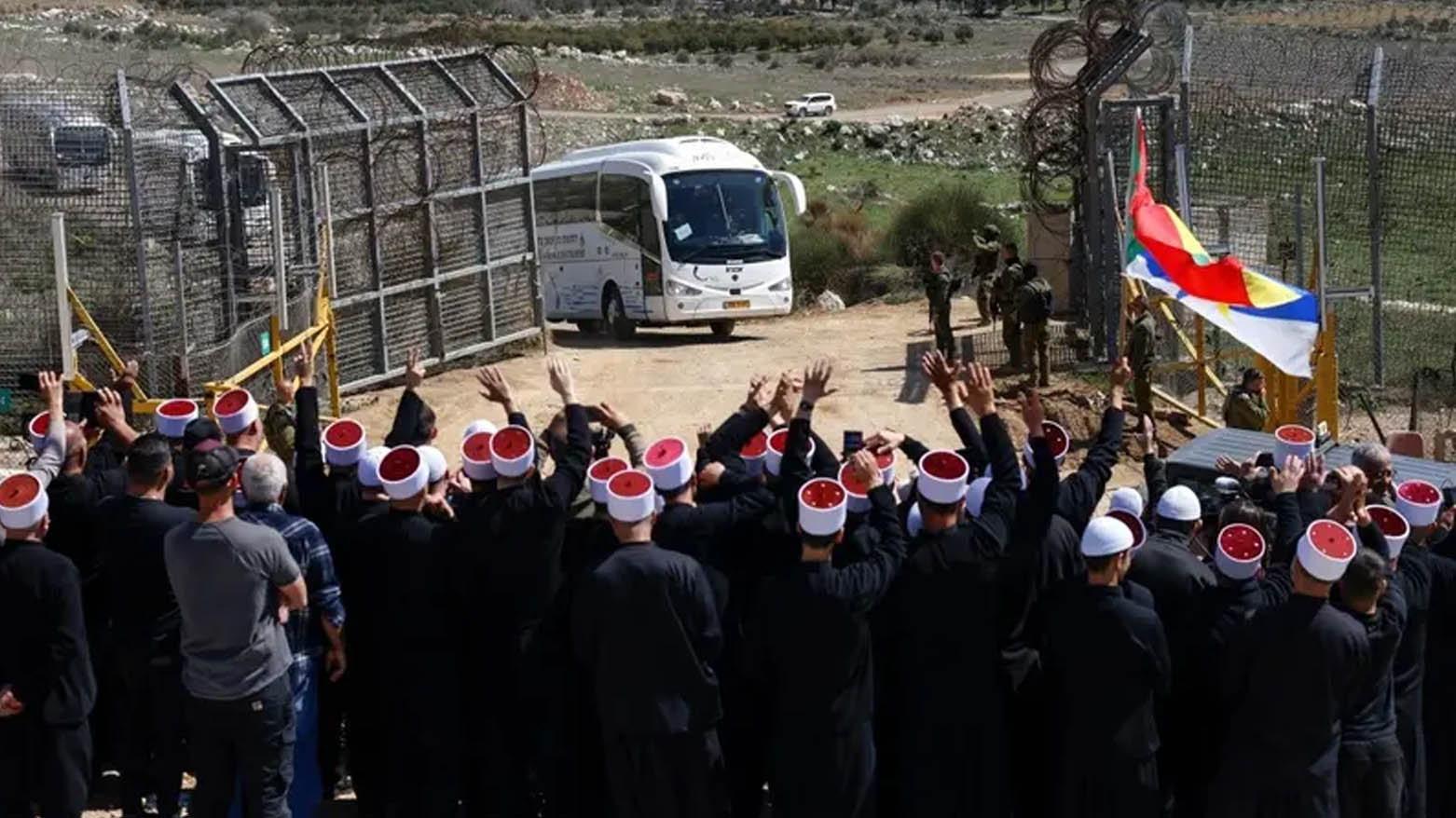
While the visit was largely seen as a symbolic gesture of solidarity with the Golan Druze, it also reflected the increasing concerns within the community about their future in a Syria governed by a new constitution that might undermine their autonomy and rights.
Israel’s vocal support for the Druze in southern Syria has further complicated the situation, with some Israeli officials making statements about the protection of Druze communities from potential harm under the new Syrian government.
While many Druze leaders have rejected such external intervention, they are nonetheless wary of any potential shift in Syria’s political structure that could negatively impact their community’s rights.
“We are committed to Syria’s unity, but we will not tolerate any government that undermines our rights or threatens our future,” said a Druze leader during a recent interview. “We need guarantees that we will be able to maintain our religious and cultural autonomy in any future Syria.”
As the dust settles on the announcement of the new constitutional declaration, the prospects for Syria’s diverse communities remain uncertain.
Observer says that, although the new constitution may indeed offer some hope for stability, but for the Kurds, Druze, and other minorities, its exclusionary nature and the centralized power structure it enshrines represent a significant step backward. These communities, which have long been marginalized in Syria’s political landscape, are now calling for guarantees that their rights will be protected in any future political settlement.
Analysis of the 2012 Syrian Constitution and the 2025 Constitutional Declaration from a National Diversity Perspective
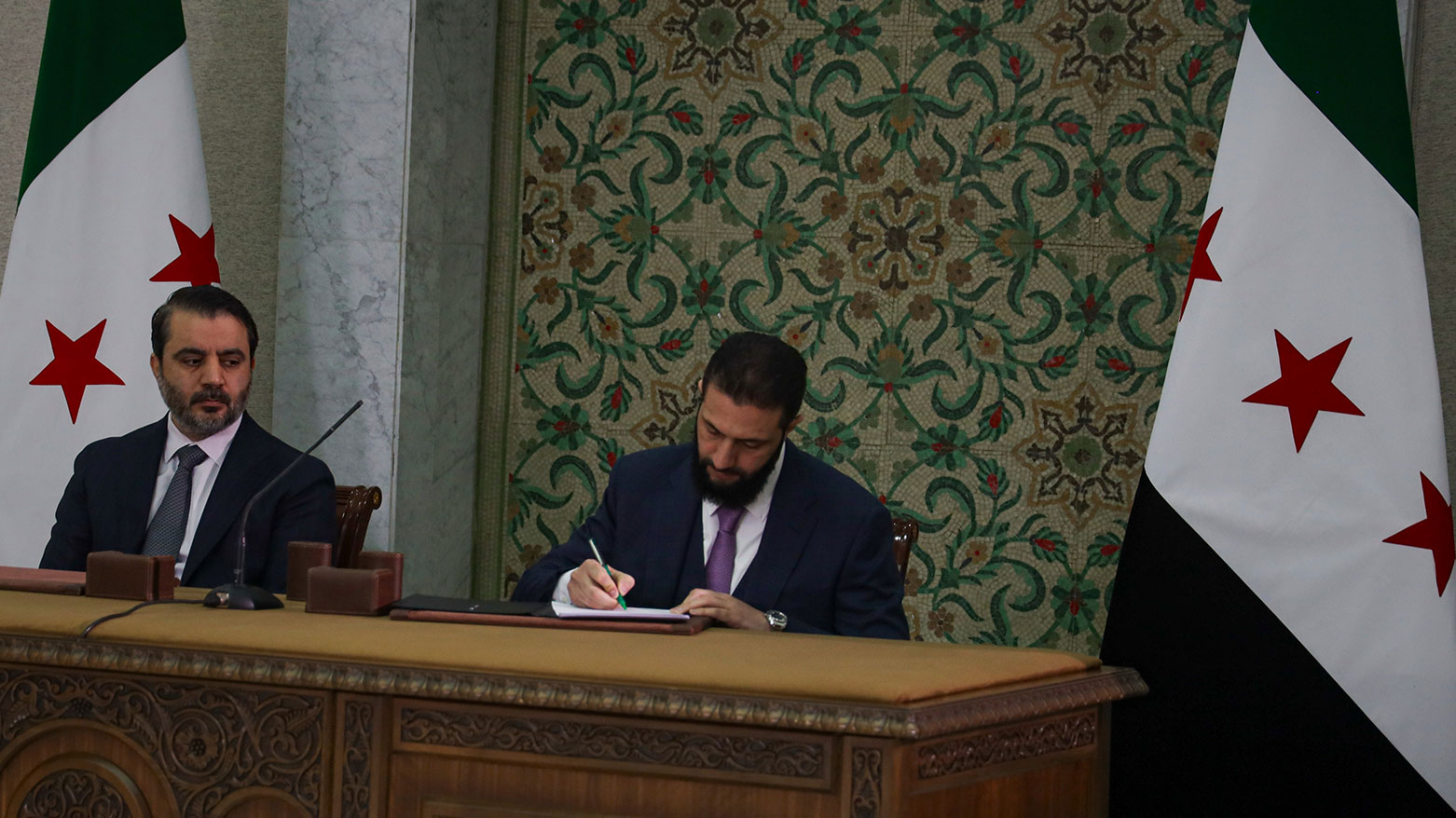
The Syrian constitution has undergone significant changes over the past decade, reflecting the nation’s ongoing political and social upheavals. While the 2012 Syrian Constitution marked an important shift in the country’s legal framework, it has been widely criticized for its narrow focus on Arab identity, failing to recognize Syria's rich ethnic and cultural diversity. This omission has remained a point of contention, particularly among marginalized communities such as the Kurds, Assyrians, and others.
Under the 2012 Constitution, Syria was defined as part of the Arab nation, with Arabic as the sole official language. This structure did not provide explicit recognition of the linguistic or cultural rights of Syria’s diverse national groups. Political pluralism was also limited, with the ruling party retaining significant control over the country’s governance.
In response to the political transformations that began in late 2024, the transitional Syrian government introduced a new constitutional declaration draft in March 2025. While this declaration emphasizes pluralism and aims to foster a new political order, it retains certain features that limit its inclusivity. One of the most notable elements is the reaffirmation of Islamic Sharia as the primary source of legislation, which some argue marginalizes the country’s cultural diversity.
The 2025 declaration acknowledges pluralism but does not adequately address Syria's ethnic, cultural, and religious diversity. Although it alludes to political representation, the process has sparked concerns over the exclusion of certain groups from critical discussions. The lack of explicit provisions for linguistic diversity further underscores the ongoing debate over how well the new declaration represents Syria’s national composition.
As Syria continues to grapple with its identity and political future, these constitutional shifts underscore the persistent challenges in creating a truly inclusive governance structure. While progress has been made, the call for more comprehensive guarantees for all national and cultural groups remains an unresolved issue that will shape the future of the country.
